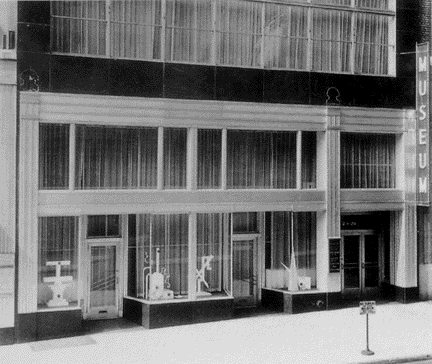

This installation is based upon the galleries of the original Museum of Non-Objective Painting, which Solomon R. Guggenheim and Hilla Rebay, his personal curator and the museum's first director, opened on East 54th Street in Manhattan in 1939. The spaces of the former automobile showroom had been transformed by architect William Muschenheim under Rebay's direction. Rebay, who was also a painter, believed passionately in abstract painting's spiritual power. Thus, she set out to create an environment for art that would allow its metaphysical qualities to be best experienced. Quite unlike the Museum of Modern Art, whose collections and new International Style building emphasized the relationship between Modern art and society, the Museum of Non-Objective Painting reflected Rebay's desire to create a setting that would make visitors feel as though they had entered another world. The interior walls and windows of the museum were covered in pleated gray velour, shutting out the exterior world. Paintings were set like altarpieces in wide, gilded frames and hung as low as a few inches from the floor, which forced viewers to orient themselves to the artworks positions. To enhance her vision of a temple for modern painting, Rebay played classical music on a phonograph, which echoed throughout the museum. In 1947, the museum moved to a townhouse at 1071 Fifth Avenue. That building was demolished when construction began in 1956 for the new museum which by that time had been renamed the Solomon R. Guggenheim Museum designed by Frank Lloyd Wright.Abstraction in the Twentieth CenturyAbstraction in:Photography